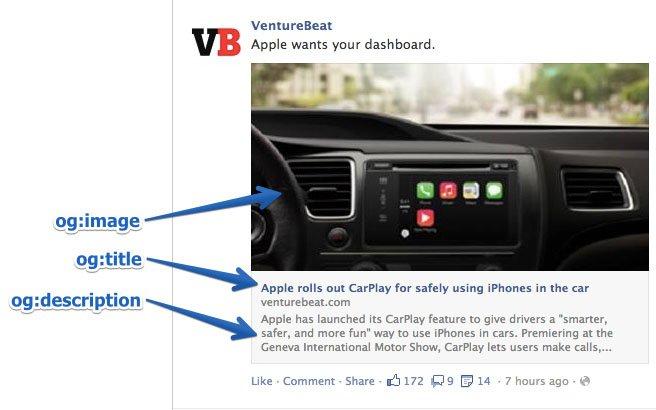12 Essential Open Graph Meta Tags for Facebook and Twitter
By Neil Patel

og:title
The og: title is how you define your content’s title. It serves a similar purpose as the traditional meta
Every marketer knows the phrase ‘content is king’, but that content is nothing without readers and followers.
These days, there’s one sure-fire way to get your content out to a broader audience and share your awesome new blog post: social media.
With a ready audience of millions, sites like Facebook and Twitter are some of the best ways of getting the word out. However, if you want to optimize that outreach potential, there’s a super-easy way to do it: open graph tags (OPGs).
Not heard of the open graph protocol behind OPGs? Then let me explain what are they, why do they matter, and — most importantly — how do you use them?
What Is Open Graph and Why Was It Created?
Facebook introduced Open Graph in 2010 to promote integration between Facebook and other websites by allowing posts to become rich objects with the same functionality as other Facebook objects.
Put simply, it helps optimize Facebook posts by providing more control over how information travels from a third-party website to Facebook when a page is shared (or liked, etc.).
To make this possible, information is sent via Open Graph tags in the part of the website’s code.
Other social media sites are also taking advantage of social meta tags. For instance, Twitter and Linkedin recognize Open Graph tags; Twitter has its own meta tags for Twitter Cards, but if Twitter robots cannot find any, it uses OGP tags instead.

See How My Agency Can Drive Massive Amounts of Traffic to Your Website
- SEO – unlock massive amounts of SEO traffic. See real results.
- Content Marketing – our team creates epic content that will get shared, get links, and attract traffic.
- Paid media – effective paid strategies with clear ROI.
Why Marketers Should Care About OGP Tags
OGP tags are vital for marketers because they help ensure that when a user shares a link to your content on social media, the correct information is automatically populated. This can help increase engagement and help potential customers learn more about your brand or product.
Additionally, marketers should care about OPG tags because social media sites are the primary drivers of most web traffic. Consequently, the ability to harness the power of social meta tags is a vital skill for today’s marketers.
Also, using OGP tags can help you track how your content is performing on social media, enabling you to adapt your sharing strategy.
However, most notably: open graph tags can have a massive impact on conversions and click-through rates by solving common issues.
For instance, have you ever shared a link on Facebook only to find the thumbnail was missing, or there was a different picture than you expected?
Knowing just a little about OGP tags can help you tackle these problems and improve your social media marketing.
There’s one thing they won’t do, though, and that’s influence your …read more
Source:: Kiss Metrics Blog







